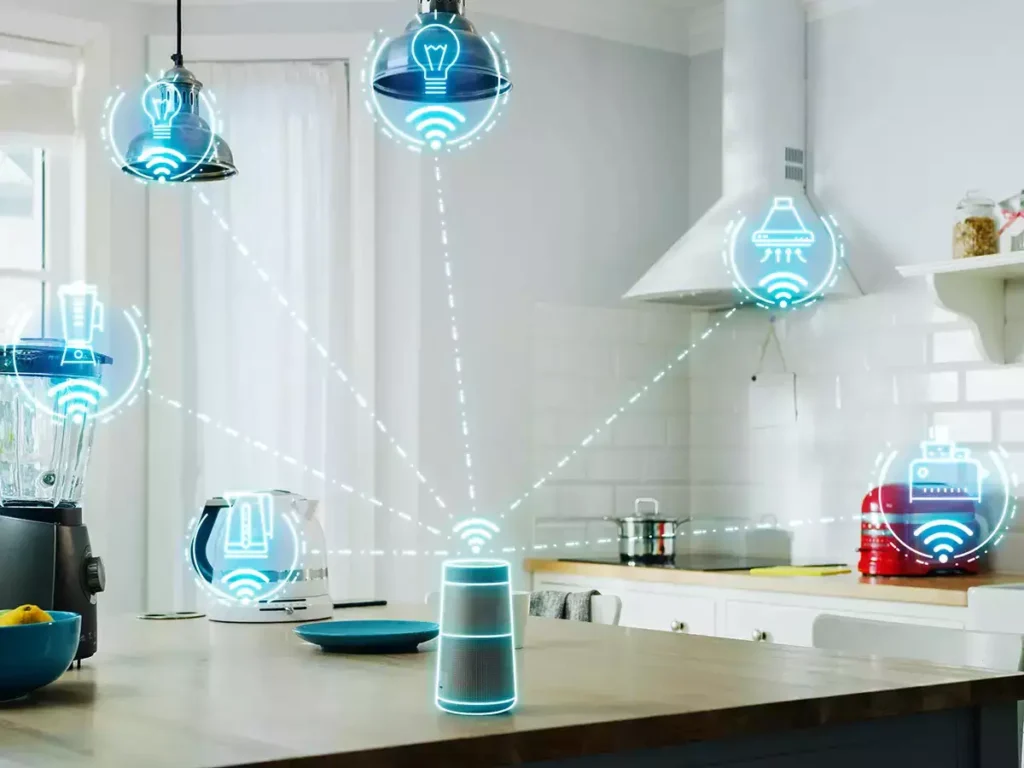Welcome to the era of ambient computing, where the world around us becomes intelligent, interactive, and attuned to our needs. Imagine a living space that anticipates your arrival, adjusting the lighting, temperature, and music to your liking. Or a workplace that seamlessly integrates devices and services, making your tasks more efficient and enjoyable.
In this article, we’ll dive into the concept of ambient computing, exploring how it creates smart environments that adapt to users’ needs, preferences, and behaviors. So, get ready to embark on a journey where technology blends harmoniously with our daily lives!
Contents
What is Ambient Computing?
Ambient computing refers to a technological ecosystem where various devices, sensors, and services collaborate seamlessly to create smart environments. It involves the integration of intelligent systems into our surroundings, enabling them to perceive and respond to our presence, behavior, and preferences. The goal is to create an immersive and adaptive experience that enhances our everyday lives.
Smart environments are the foundation of ambient computing. These environments are equipped with sensors, actuators, and interconnected devices that work together to provide personalized and context-aware experiences. From homes and offices to public spaces and transportation, smart environments transform ordinary spaces into intelligent ecosystems.
At the heart of ambient computing is context awareness. Smart environments gather data from sensors, cameras, and other sources to understand the context in which users operate. This includes factors such as location, time of day, user preferences, and even physiological and emotional states. By analyzing this data, the environment can adapt and respond accordingly, making our lives more convenient, comfortable, and efficient.
The Benefits of Ambient Computing
Ambient computing thrives on seamless integration. It brings together various devices and services, including smartphones, wearables, smart home devices, voice assistants, and cloud-based services. These interconnected components communicate and collaborate, allowing for effortless control and coordination across multiple platforms. One of the key benefits of ambient computing is the ability to personalize experiences. Smart environments can learn from user behaviors, preferences, and patterns to tailor their responses accordingly. For instance, your smart home can adjust the lighting and temperature based on your habits, or a smart office can customize your workspace and streamline your tasks based on your workflow.
Ambient computing has the potential to revolutionize productivity and efficiency in various domains. In the workplace, intelligent systems can automate routine tasks, provide contextual information, and offer real-time insights to enhance decision-making. In healthcare, ambient computing can enable remote patient monitoring, improve diagnostics, and enhance the overall healthcare experience.
As with any technology that collects and processes personal data, privacy, and security are crucial aspects of ambient computing. Designing systems that protect user privacy, secure data transmission, and provide users with control over their personal information is of utmost importance. Transparency and robust security measures must be implemented to build trust and ensure the responsible use of ambient computing technologies.
The Future of Ambient Computing
Ambient computing is still evolving, and its potential is vast. As technology advances, we can expect more sophisticated and intuitive smart environments. Artificial intelligence and machine learning will play a significant role in enhancing the adaptability and intelligence of ambient computing systems. We may witness the integration of augmented reality, virtual reality, and advanced sensing technologies, further blurring the boundaries between the physical and digital worlds.
Ambient computing opens up a world where technology seamlessly integrates with our surroundings, enhancing our lives in ways we never imagined. By creating smart environments that adapt to our needs, preferences, and behaviors, ambient computing transforms our homes, workplaces, and public spaces into personalized, efficient, and delightful experiences. As this field continues to evolve, let us embrace the magic of ambient computing and unlock its full potential for a smarter, more connected future.




